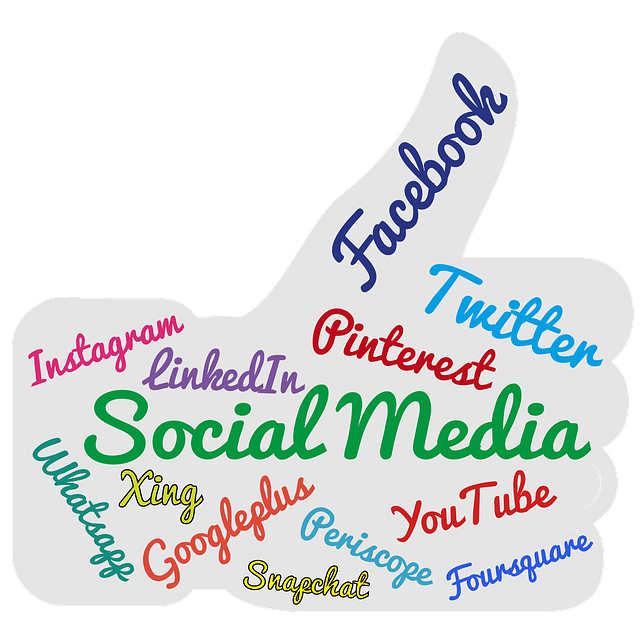How can Social Media Benefit Your Business?
Consider that there are now more than 3 billion using social networks across the globe. And Social Media is their preferred method to engage with brands.
It’ not surprising that Sherpa Marketing found that more people follow brands on social media than follow celebrities. On Instagram alone 80 percent of people follow at least one business.
If you’re not taking advantage of social, you’re missing out on a fast, inexpensive, and effective way to reach almost half the world’s population. Let’s examine some of the ways that social media can help you connect, engage, and grow your business.
Embrace the Benefits of Social Media for Brand Building

How to Use Social Media to Increase Your Brand Awareness
With nearly half of the world’s population using social media platforms, social media is the natural place to reach new and targeted potential customers.
Do you think that people only connect with brands they already know on social media? Stats show that 60 percent of Instagram users say they discover new products on the platform.
See how Absolut Vodka ran an Instagram campaign to promote its limited edition Spark bottle. Using this Instagram campaign, the company achieved a five-point lift in brand awareness.
How Social Media Can Humanize Your Amazing Brand
A UK study from Trinity Mirror Solutions found that more than half of adults do not immediately trust a brand. They need to see “real-world proof” that your brand keeps it’s promises.
To connect with customers, and potential customers, you need to show the human side of your brand. Others need to see how you embracing your brand values? How are you looking out for the best interests of your customers and employees? Does your product really work?
Creating real human connections is one of the key benefits of using social media for your business. These connections are known as Meaningful Relationship Moments. You need to introduce your followers to your company employees and show how existing customers are using and benefiting from your products.
A social media advocacy program can be a great way to humanize your brand.
How Can Social Media Establish Your Brand as a Thought Leader?
No matter what industry your business is in, social media can help you establish your brand as an expert or thought leader. You want to be seen as the go-to source for information on topics related to your business niche.
Thought leadership, like brand advocacy is a great way to build consumer trust. To establish this fact, LinkedIn research in partnership with Edelman shows that marketers underestimate just how much thought leadership can impact trust. This is especially true for B2B marketers.
Half of B2B marketers surveyed believed their thought leadership would build trust in their companies. Supporting this, more than 80 percent of buyers said thought leadership builds their trust in a brand.
The 2018 Edelman Trust Barometer found that 63% of people trust technical experts, while only 42 percent of people who trust businesses over technical experts. LinkedIn, especially the LinkedIn Publishing Platform, is a great social network to focus on when aiming to establish yourself as a business thought leader in your niche.
Social Media Keeps Others Thinking About You
Most social media users log into their accounts at least once per day, according to Pew Research Center, and many people are checking social multiple times per day.

Social media helps you to connect with fans and followers every time they log in. It’s important for you to keep your social posts entertaining and informative. You want your followers to look forward to seeing your new content in their feeds. You need to remain top of your customers mind so you’re their first stop when they’re ready to make a purchase.
Embrace the Benefits of Social Media for Your Growth
You Can Increase Your Website Traffic Using Social Media
Social media posts and ads are key ways to drive traffic to your website. Sharing great content on your social channels is a great way to get readers as soon as you publish a new post.
Participating in social chats is a great way to increase your visibility. Using social media gets attention from new people, showcases your expertise, and drives traffic to your website and your business.
Rather than being too promotional, offer real value in your social media chat. Just ensure that your website address is included in all of your social media profiles. That way people who want to learn more about you can do so with one easy click.
Even better, highlight a landing page on your website that’s relevant to your chat by using a pinned post.
How Social Media Can Generate Business Leads
Social media offers an easy way for potential customers to express interest in your business and products. Lead generation is an important benefit of using social media for your business. It is so important that many social networks offer advertising formats specifically designed to collect leads.
For example, Renault Europe used Facebook lead ads that allowed people interested in learning more about a new model to book a test drive directly from Facebook, with just a few key strokes.
Renault’s Facebook ads had a 7.9 times lower cost per lead than ads linking directly to a form on the Renault’s website.
How to Boost Your Business Sales Using Social Media
No matter what you sell, social media can help you sell it. Your social media accounts are a critical part of your sales funnel. This is the process through which you turn a new contact into a customer.
As social media use continues to grow and social sales tools evolve, social networks are becoming increasingly important for product search and ecommerce. Now is the time to align your social marketing and sales goals.
For individual sales professionals, social selling has already become a critical tool.
How Social Media Influencers Can Help Grow Your Business
Word of Mouth drives 20 to 50 percent of all purchasing decisions. When you get people talking about your product or company on social media, you build your brand’s awareness and credibility. This sets your brand up for more future sales.
A great way to drive social your social media word of mouth marketing is to partner with influencers. Those influencers who have a large social media following can draw the attention of their following to your brand.
Research from Nielsen, Carat, and YouTube shows that collaborating with an influencer can give your brand four times more lift in brand familiarity than collaborating with a celebrity.
Social Media Benefits Your Content Creation and Distribution
You Can Promote Your Content Using Social Media
Promoting your content on social channels is a great way to get your smart, well-researched content in front of new people, proving your expertise and growing your audience.
For example, Adobe used a LinkedIn Sponsored Content to showcase its research, including infographics and videos.
Marketing decisions-makers exposed to Adobe’s promoted content were 50 percent more likely to view Adobe shaping the future of digital marketing and 79 percent more likely to agree that Adobe could help them optimize media spend.
To maximize the social media for business benefits, ensure that you have an engaging content marketing plan in place.
How to Use Social Media to Make Your Content Go Viral
As people start liking, commenting on, and sharing your social posts, your content is exposed to new audiences, their friends and followers. Going viral takes this concept even further. As people share your content with their networks, and their networks follow suit, your content may spread across the internet, getting thousands or even millions of shares.
This exposure is especially beneficial because all those shares, likes, and comments show an existing connection with your brand. If I see that my friend likes your article, I may be inclined to check out what you have to say, even if I’ve never heard of your company. In a world where there is far more content than any one person could ever consume, a friend’s social share acts as a kind of pre-screening.
Going viral is no easy task, however social media is what makes it possible.
How Using Social Media Helps You Source Your Content
There are two key ways businesses can source content on social media:
- Source ideas: Ask your followers what they want, or engage in social listening, to understand the ideas for content you can create yourself. Give people what they’re asking for to create content that people will want to read and share.
- Source material for posts: Create a contest or use a hashtag to source user-generated content you can share. Involving your followers helps build excitement about your brand while also providing you with a library of social posts to share over time.
Just how much content can you get through a User Generated Campaign? Check out the #wanderlustcontest hashtag from National Geographic, which has generated more than 60,000 posts.
The Benefits of Social Media for Communicating
How Social Media Helps Manage Your Reputation
Your customers are already talking about you on social media, whether or not you’re there to respond. If you are listening, you can pick up on important social posts about your brand to highlight the positive and address the negative before it becomes an urgent issue.
Is someone saying something about your business that’s not true? Be sure to share your side of the story in a polite, professional way. Someone singing your praises? Send them plenty of thanks and draw attention to their kind words.
How Social Media Helps Your Crisis Communication
When a Philadelphia Starbucks store had two black men arrested, the hashtag #BoycottStarbucks went viral, and fast. The hashtag was used more than 100,000 times in just three days. That is officially a crisis.
Starbucks, to its credit, responded quickly
We apologize to the two individuals and our customers for what took place at our Philadelphia store on Thursday.

After this first apology, the company followed up with several more statements on social media, and announced that it would close all of its stores for a day of racial-bias training. It remains to be seen what the long-term effects of this incident will be for the Starbucks brand, but the consequences would almost certainly been worse if the company had not responded quickly and appropriately on social media.
Does your company have a plan in place for dealing with a crisis? While smaller brands may not have a crisis blow up to such a large scale, a smaller number of shares can have a devastating impact within a tight-knit community or niche.
Silence is not an option when it comes to responding to crises on social media. Maintaining well-run and managed social accounts and having a plan in place can help make sure you’re present and ready to engage if the worst occurs.
Social Media Helps Your Customer and Audience Engagement
Social networks help you interact directly with customers and fans, and also gives them the chance to interact directly with your brand. Unlike traditional media, which offers only one-way communication, social media is a two-way street.
If you want customers and followers to be engaged, you have to be engaged yourself. Stay active and respond to comments and questions on your own social media posts in a way that’s appropriate to your brand.
You can also use social media monitoring to keep an eye on what people are saying across the social web.
How to Drive Your Customer Service and support Using Social Media
People expect brands to be available on social media and seek out their social accounts for customer service. Research published in the Harvard Business Review shows that brands who don’t meeting those expectations damage their bottom line.
The HBR research, which specifically looks at Tweets, shows that customers who receive a response to their Tweet would be willing to spend more with the brand on a later purchase, especially if they get a response within five minutes. That holds true even when the initial Tweet was a flat-out complaint.
Benefits of Social Media for Gaining Insights
How to Monitor Social Media Conversations Relevant to Your Brand
We mentioned social media monitoring above as an important element of audience engagement. But it’s also important as a key source of intelligence about your brand, your competitors, and your niche.
Use Social Media to Learn More About Your Customers
Social media generates a huge amount of data about your customers in real time. You can use that information to make smarter business decisions.
All of the major social networks offer analytics that provide demographic information about the people interacting with your account. This can help you tailor your strategy to better speak to your real audience.
We’ve created extensive guides on how to use analytics in Facebook, Instagram, Twitter, LinkedIn, Snapchat, and Pinterest, so there’s no excuse to remain in the dark about your customers and social followers.

Social Media Helps Gauge Sentiment Around Your Brand
Lots of mentions is a good thing, right? Sure, in many cases. But if you’re getting lots of mentions with a negative sentiment, you need to do some quick thinking to figure out what’s gone wrong and address the problem.
Hootsuite’s social engagement coordinator, Nick Martin, defines social media sentiment as “the perceived positive or negative mood being portrayed in a social media post or engagement.”
While it’s important to know how much people are talking about your brand online, it’s also important to know how people actually feel about your brand
Using social media for your business allows you to stay on top of sentiment analysis so you can protect your brand reputation.
Social Media Helps Keep an Eye on Your Competition
It’s also important to know what people are saying about your competitors.
For example, tracking mentions of your competitors might reveal pain points with their products that you could reach out to address, winning new customers in the process.
When Uber Canada launched a promotion to deliver free ice cream for a day in Vancouver, things went spectacularly wrong. People couldn’t get their free ice cream, and they were not happy about it. They took to social media to complain.
The social team at Skip The Dishes saw an opportunity and reached out to people complaining about Uber with a free ice cream delivery of their own, in the form of a Skip The Dishes credit. All those Uber haters quickly turned into Skip The Dishes fans, and new customers (since you had to create a Skip The Dishes Account to get your free ice cream)
Monitoring the competition on social media also means you’ll be aware when you competitors launch new products, run promotions, and release new reports or data.
Social Media Helps You Stay on Top of Industry News
In the online world, things move fast—and you can’t afford to be left behind. Keeping a virtual ear to the ground through social listening makes sure you’re always informed about upcoming changes to your industry that could affect the way you do business.
Enjoy the Benefits of Social Media Advertising
Social Media is Great for Targeted Advertising
Social ads are an inexpensive way to promote your business and distribute content. They also offer powerful targeting options so you can reach the right audience and make the most of your budget.
Savvy marketers have embraced this key benefit of social media for business: They will spend twice as much on Facebook ads in 2018 as they will on newspaper advertising.

With ad targeting options including demographic information, geography, language, and even online behaviors, you can craft specific messages that best speak to different groups of potential customers, and only pay for the exact viewers you want to reach.
How to Use Social Media to Retarget Your Customers
A terrible statistic is that nearly 69.5% of online shopping carts are abandoned. Visitors who have abandoned shopping carts are your prime potential customers. They have found your website, browsed your products, and made a decision about what they might want.
People abandon shopping carts for many reasons, but someone who has expressed this degree of interest in your company should not be ignored. Using tracking tools like the Facebook Pixel, you can show these potential customers social media ads for the exact products they have browsed on your website or placed in the shopping cart.
Benefits of Social Media for Proving Your ROI
Social Media Has Great Built-in Reporting and Analytics
It is always a challenge for marketers to prove return on investment. But with social media tracking and analytics tools, you can see the full impact of your social media activities, from follows to engagements right through to purchases.
Google Analytics tracks your website traffic generated from social media, conversions, email sign-ups, and ROI for both organic and paid social media campaigns. UTM parameters is another great tracking tool that will help you see which social networks are providing the most benefits for your business.






